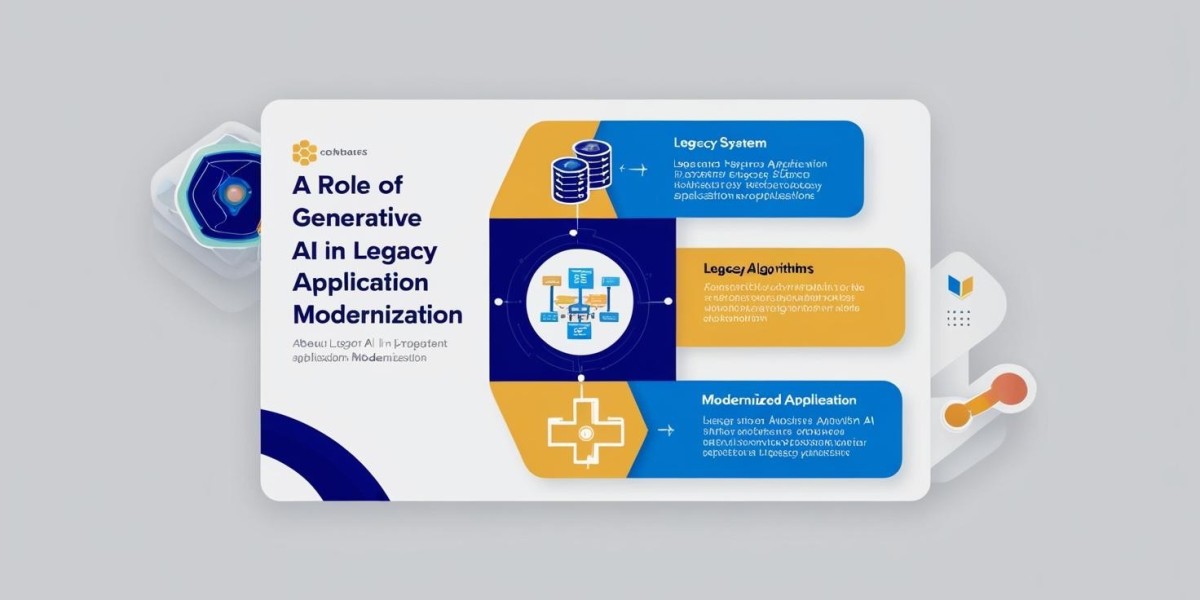In today’s fast-changing digital world, businesses cannot afford to rely on old, slow, or outdated software systems. Legacy applications—those built decades ago using now-obsolete technologies—can hold a company back from moving forward, serving customers better, or staying competitive. But modernizing them is no small task. This is where Generative AI steps in as a game-changer.
Generative AI, a branch of artificial intelligence capable of generating new content, including code, is revolutionizing how companies upgrade their legacy systems. This article explores the role of Generative AI in modernizing legacy applications, how it helps businesses, and what the future looks like when machines and humans work together to rewrite the past.
Understanding Legacy Applications
Before we explore how AI helps, let's understand what legacy apps are.
Legacy applications are old software systems that were once cutting-edge but now struggle to meet modern needs. They often:
Run on outdated platforms or languages (like COBOL or Visual Basic)
Lack cloud compatibility
Are difficult to integrate with new apps
Require a lot of manual maintenance
Are risky because few people understand their inner workings today
Despite their age, these systems often hold critical business data and processes. Banks, hospitals, insurance firms, and even governments still depend heavily on legacy software.
The problem? These systems are not flexible, scalable, or cost-efficient. But replacing them from scratch is risky, expensive, and time-consuming.
This is why modernization—especially with the help of Generative AI—has become such an exciting and necessary solution.
What is Generative AI?
Generative AI refers to algorithms (like GPT, DALL·E, and Codex) that can generate new content: text, images, code, even music. In the context of software development, it can:
Translate legacy code to modern languages
Suggest improvements or optimizations
Generate documentation for hard-to-read code
Create test cases automatically
Assist in UI redesign
Unlike traditional AI, which analyzes and classifies, Generative AI creates. And this makes it perfect for helping companies transform their old codebases into modern, scalable apps.
How Generative AI Helps in Legacy App Modernization
Let’s explore specific ways Generative AI is changing the legacy modernization game:
1. Automated Code Translation
Many legacy applications are written in old languages like COBOL or Pascal, which are rarely taught today. Generative AI can scan old code and translate it into modern languages like Java, Python, or C#. This reduces the need for manual translation, speeds up the process, and minimizes errors.
For example, a banking application written in COBOL can be re-coded in Java with the help of an AI assistant, reducing what used to take months to a few weeks.
2. Code Refactoring and Optimization
Legacy code is often cluttered, inefficient, and hard to maintain. Generative AI can analyze and refactor this code—removing redundant lines, improving performance, and making it more readable.
This doesn’t just modernize the code—it also improves speed, lowers maintenance costs, and makes future development easier.
3. User Interface (UI) Modernization
Most legacy apps have outdated, non-responsive user interfaces. Generative AI tools can automatically suggest new UI layouts based on modern design standards, create prototypes, or even generate UI code using frameworks like React or Flutter.
This helps businesses offer users a cleaner, mobile-friendly, and modern experience.
4. Intelligent Testing
Testing legacy systems is tricky. You often don’t know what might break. Generative AI can generate test cases based on the legacy code, simulate usage scenarios, and identify risks before deployment.
This leads to faster, safer migrations with minimal disruption.
5. Documentation and Knowledge Extraction
Many legacy systems lack proper documentation. Generative AI can read through thousands of lines of code and generate documentation, including logic summaries, system flow diagrams, or code annotations.
This reduces the reliance on retiring developers and helps new teams take over confidently.
Benefits of Using Generative AI for Modernization
Using Generative AI to modernize legacy apps has multiple advantages:
Speed: AI can process and refactor code faster than humans
Cost Efficiency: Reduces the need for large development teams or external vendors
Accuracy: Minimizes manual errors and inconsistencies
Scalability: Helps prepare systems for cloud and microservices architecture
Employee Productivity: Developers spend less time deciphering old code and more time on innovation
Most importantly, it bridges the gap between outdated systems and modern business needs, without fully rewriting everything from scratch.
Real-World Use Case
Let’s take an example from the insurance sector.
An insurance company was running an old claims processing system built in COBOL in the 1990s. It worked—but was slow, hard to maintain, and lacked modern features like mobile access.
Using Generative AI, the company:
Translated the COBOL code into Python
Automatically generated API endpoints
Rebuilt the frontend using ReactJS
Used AI to test the modernized app thoroughly
What would have taken two years was completed in six months—at half the cost.
Challenges and Considerations
While powerful, using Generative AI in modernization is not plug-and-play. Some key challenges include:
Quality Control: AI-generated code still needs review and testing.
Security Risks: If sensitive data is exposed to AI platforms, privacy can be compromised.
Tool Selection: Not all AI tools are right for every language or system.
Human Oversight: Developers must supervise the process to ensure logic and context aren’t lost.
Thus, businesses should use Generative AI as a partner—not a replacement.
The Future of Generative AI in App Modernization
Looking ahead, Generative AI will continue to evolve:
Context-Aware AI: Future models will better understand business logic and user needs.
Integrated Dev Environments: AI tools will be deeply embedded in IDEs like Visual Studio Code or IntelliJ.
Collaborative Workflows: AI and humans will co-create apps faster through natural language and visual builders.
Continuous Modernization: Rather than one-time projects, AI will keep legacy systems updated in real-time.
Companies that embrace this future will find themselves faster, leaner, and more agile in adapting to market demands.
Conclusion
Legacy systems don’t have to be a burden. Thanks to Generative AI, businesses can modernize old applications more efficiently, affordably, and accurately. From translating code to redesigning user interfaces and testing systems, AI is transforming how we approach legacy systems.
For companies looking to upgrade their digital foundation, partnering with experts who understand the intersection of AI and software evolution is key. That’s why many organizations today are turning to _bold Legacy modernization services to ensure a smooth, secure, and intelligent transformation.
FAQs
1. What is Generative AI in simple terms?
Generative AI is a type of artificial intelligence that can create new content—like text, code, or images—by learning patterns from existing data. In software, it helps write and improve code automatically.
2. Can AI really understand old legacy code?
Yes, AI models trained on various programming languages can read, analyze, and even translate legacy code into modern languages. It’s not perfect, but it greatly reduces manual effort.
3. Is AI-based modernization safe for mission-critical apps?
With the right tools, human supervision, and thorough testing, AI-based modernization can be safe and effective. It's already being used by banks, insurers, and governments worldwide.
4. What’s the difference between rewriting and modernizing an app?
Rewriting means building the app from scratch, while modernizing updates existing code, systems, and interfaces. Modernization is usually faster and less risky—especially with AI.
5. How can I get started with legacy app modernization using AI?
Start by assessing your current systems, identify modernization goals, and consult with experts in AI-enabled transformation. You can use AI tools for testing, documentation, and code translation, and scale up from there.








